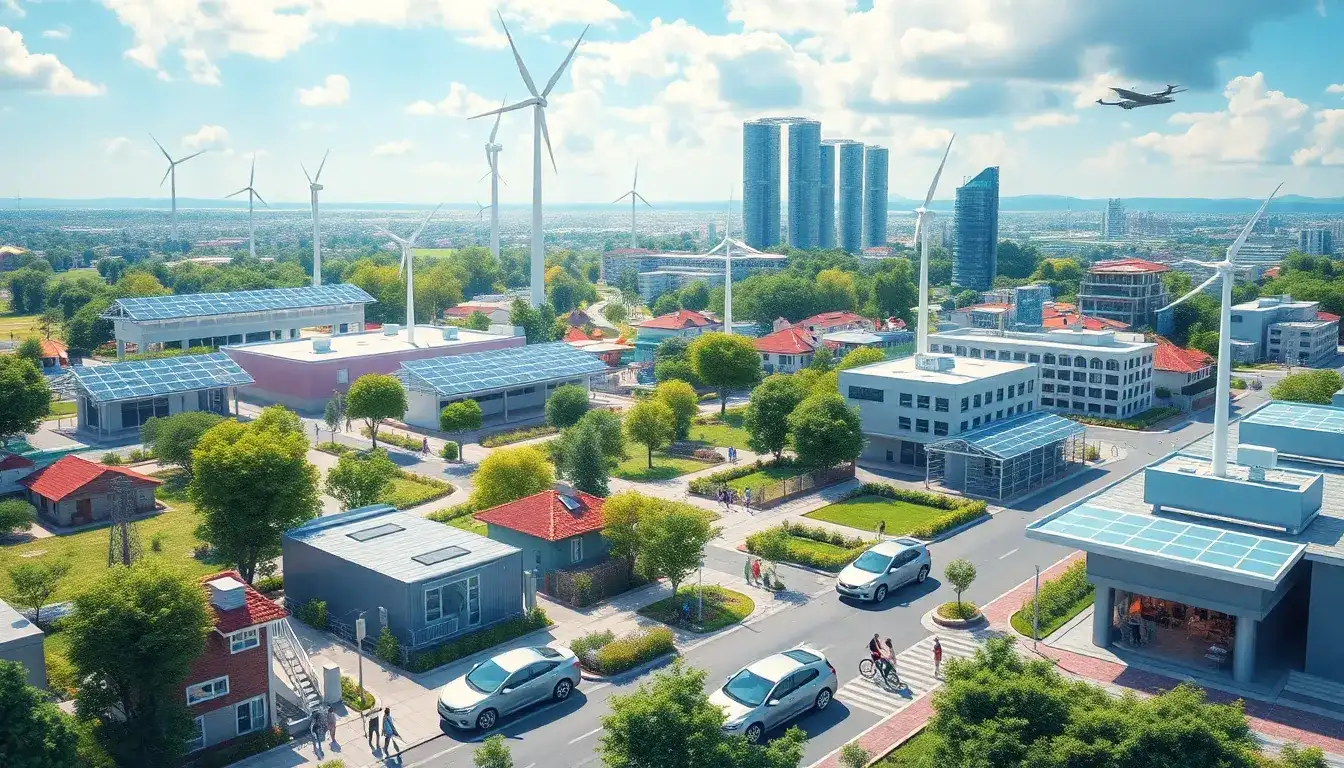
“`markdown
With the increasing significance of renewable energy in the global energy transition, microgrids have gained considerable attention as an efficient and flexible power solution. However, current networked microgrid systems face challenges, including complex structures, numerous parameters, and substantial fluctuations in generation capacity. This paper addresses the parameter optimization problem of networked microgrids that integrate multiple forms of energy generation and storage.
A multi-objective microgrid structure decision-making model is constructed, which takes into account operation and maintenance costs, fuel costs, penalties for power abandonment and shortages, transaction costs, and pollution control costs. The goal is to achieve joint optimization of economic benefits and environmental sustainability. To solve the model, an improved multi-objective particle swarm optimization (IMOPSO) algorithm is proposed.
To validate the model’s effectiveness under scenarios of distributed energy and fluctuating loads, a scenario analysis method is employed, analyzing data from 2000 scenarios and extracting four typical deterministic scenarios for simulation experiments. The results indicate that, compared to traditional microgrids, the proposed net-connected economic dispatch optimization method reduces the generation and environmental costs from 96.76 ¥ to 428.19 ¥ while maintaining the load loss rate between 0.34% and 4.56%. The utilization rate of renewable energy is improved to approximately 95%.
Keywords
microgrid; scenario analysis; particle swarm optimization; economic dispatch optimization
1. Introduction
As global energy demand continues to rise, the over-exploitation of fossil fuels is rapidly depleting resources, emphasizing the importance of renewable energy sources in the energy transition. Governments and companies are increasingly investing in renewable energy. However, photovoltaic and wind power generation are significantly affected by weather and seasonal changes, leading to volatility and randomness that create an imbalance between energy supply and demand. Microgrids, as an emerging power system architecture, can effectively integrate multiple energy sources and achieve local self-sufficiency, thus enhancing energy reliability and security.
Despite these advantages, the complexity of the microgrid’s economic optimal dispatch poses significant challenges. This complexity arises from its diverse energy structure and operating environment, necessitating improved scheduling algorithms to coordinate various energy sources and consider energy storage device configurations to handle load changes and generation uncertainties. Current research has largely focused on single-objective optimization, often neglecting comprehensive analyses of multiple objectives. Thus, constructing a multi-objective microgrid structure decision-making model to consider both economic benefits and environmental sustainability is crucial.
2. Literature Review
Microgrids can be categorized into stand-alone and networked systems. Stand-alone microgrids operate independently and are suitable for remote areas, while networked microgrids allow for bidirectional power flow with the main grid, facilitating efficient energy management in urban and industrial areas. The economic optimal dispatch of microgrids has become a hot research topic, with various models and algorithms proposed to minimize power system losses and optimize output scheduling.
Despite advancements, existing studies often prioritize economic optimality over environmental considerations, leading to inadequate attention to the microgrid’s environmental impact. Furthermore, many studies focus solely on either stand-alone or networked microgrids without comparative analysis of their operation and maintenance costs, environmental costs, load loss rates, and renewable resource utilization.
To address these gaps, this paper proposes a networked microgrid model integrating renewable energy generation, energy storage, and diesel generators, utilizing an improved multi-objective particle swarm optimization algorithm to optimize both economic and environmental benefits.
3. Model Architecture
3.1. Model Components
The model comprises wind power generation, photovoltaic systems, diesel generators, and energy storage systems. The output power of wind turbines and photovoltaic systems is calculated based on wind speeds and solar irradiance, respectively. Diesel generator fuel consumption is modeled based on output power. The state of charge (SOC) of the battery is calculated to manage charging and discharging states effectively.
3.2. Model Running Strategy
The connected microgrid operates flexibly, prioritizing renewable energy to meet load demands. Unmet demand is supplemented by battery discharging or diesel generators if necessary. In connected mode, the microgrid can purchase power from the main grid or sell surplus energy, optimizing both operation and economic efficiency.
3.3. Optimization Objective and Constraints
The optimization objective minimizes total power generation costs and environmental pollution over a 24-hour operation cycle, considering various costs related to operation, fuel, power penalties, transactions, and emissions. Constraints ensure that power balance is maintained and operational limits are respected.
4. Uncertainty Source-Load Scenario Setting
4.1. Source-Load Probability Density
Wind speed affects power output and is described using a Weibull distribution. Solar energy uses a Beta distribution, while load is modeled with a normal distribution. This allows for accurate representation of variability and randomness in the microgrid’s operation.
4.2. Generation and Reduction of Dataset
Scenario generation involves creating numerous scenarios through Latin hypercube sampling, followed by scenario reduction to retain the most representative scenarios. This process effectively captures the variability in weather and load conditions, essential for analyzing microgrid performance under different scenarios.
5. Results and Simulation
The networked microgrid system’s parameters are set, and the IMOPSO algorithm is employed to solve the scheduling optimization model. Simulation results demonstrate significant reductions in both generation and environmental costs, showcasing the advantages of the proposed optimization model.
6. Conclusions
The study highlights the effectiveness of economic dispatch optimization in maintaining stable microgrid operations while reducing costs and environmental impacts. The proposed multi-objective optimization model addresses both economic and environmental concerns, enhancing the overall efficiency and sustainability of hybrid renewable energy microgrids. Future research will expand the analysis to include power quality considerations and other forms of energy storage.
“`
Original article by NenPower, If reposted, please credit the source: https://nenpower.com/blog/economic-optimization-of-hybrid-renewable-energy-microgrid-operations/


